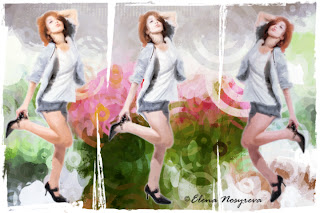This marvelous Russian style church, built on the spot
where Emperor Alexander II was mortally wounded in March 1881. The church was
built between 1883 and 1907 and was officially called the Resurrection of Christ
church (a.k.a. The Church of our Savior in Spilled Blood).
Architecturally,
the Cathedral differs from St. Petersburg's other structures. The city's
architecture is predominantly Baroque and Neoclassical, but the Savior on Blood
harks back to medieval Russian architecture. The church is only a block away
from Kazan cathedral which was built in traditions of Classical architecture. It is a western church in a
western city, and although the cathedral held Russian Orthodox ceremonies and
featured icons, it is still laid out much like a Catholic Cathedral.
 |
| Kazan Cathedral |
As a result, it becomes a symbol of the liberal
European influence, which Alexander III so despised and blamed for his father’s
death. Alexander III insisted that his church be line of sight to the Kazan cathedral
to remind his citizens of the dangers of liberalization and reform.
The glazed brick and polychrome tiles are trimmed with
shining marble.
However, it is the mosaics that are the real treasure.
The flamboyant exterior of the building is adorned with icons in a riot of
color and becomes more mind boggling the closer you get. Inside there is almost
7,000 sq. meters of Italian marble and over 20
different Russian minerals, that
embellish the opulent mosaics based on paintings by Nikolai Bruni, Mikhail
Nesterov, and other religious artists of the late 19th century.
Christ and the Apostles are portrayed within the
cupola, while the walls and pillars are totally adorned with other Biblical
scenes or images of saints. Mosaics fill
the niches, crevices and cornices and no surface is left bare of embellishment.
In the aftermath of the
Russian revolution the church was ransacked and looted of the fine wooden icons
and religious alter facades. The Soviet
government closed the church in the early 1930s. During the Second World War when many people starved
to death during the siege of Leningrad, the church was used as a temporary morgue
for those who died from combat, starvation and illness. It was hit by many German shells, at least one of which went through the roof, but failed to explode saving irreplaceable interior art.
After the war, it was
used as a warehouse for vegetables, leading to the sardonic name of Savior
on Potatoes. Later, it was used for many years as a storage space for a local opera company.
In 1968, the church was recognized as a heritage asset. It was reopened in August 1977, after 27 years of restoration (it took more time to restore it, than to build), but has not been consecrated and functions as a Museum of Mosaics. Even before the Revolution ut never functioned as a public place of worship, having been dedicated exclusively to the memory of the assassinated tsar.
The Church is now one of the main tourist attractions in St. Petersburg. Not only does it look like what the rest of the world has become to expect fron the Russian Ortodox church, but does so in a breathtakingly beautiful and picturesque way.




































